If your partner comes home with a new library book, don’t be too quick to dismiss it – it may be the beginning of your new career!
For self-taught watercolour artist, now award-winning US art quilter Peggy Brown, this certainly was the case. An ex-journalist and mother of three young boys in the 1970s, Peggy delighted in a break from the chores. The watercolour book that her husband, Jim, brought home from the library, gave her a chance to relax and indulge herself in her childhood love of art.
Once opened and the paintbox wetted, painting became an obsession – and the beginning of Peggy’s trajectory to US art quilt royalty.
Peggy began – initially on paper and later on fabric – for her own enjoyment. But she gains true fulfilment through uniting with her viewers through her vision and the marks that she makes. In the same way, she sees her works as collaborations between herself, the artist, and her medium – watercolour.
Over the last 50 years, Peggy has exhibited in museum exhibitions, painting exhibitions and fiber art exhibitions across the USA and in Canada, including Quilt National, Art Quilt Visions and Art Quilts at the Whistler. She has won many awards including the $5000 award for Contemporary Artistry for her work “Alike But Not The Same III”, pictured below.
Her work has been featured in seven books on creative collage techniques, watercolour and art quilting and in many magazine and web articles.
She is a Juried Artist Member of SAQA and her work features in US museums, art centres, universities, city and private collections and those of corporations.
With this number of accolades, it is not surprising that Peggy has been featured in Marquis Publications’ Who’s Who in American Art, Who’s Who in America and Who’s Who of American Women.
We learn in this interview how Peggy’s childhood formed her initial love of textiles, how her journey evolved from her first tentative brush strokes to producing art quilts, and how learning to integrate digital effects opened up a world of new possibilities.
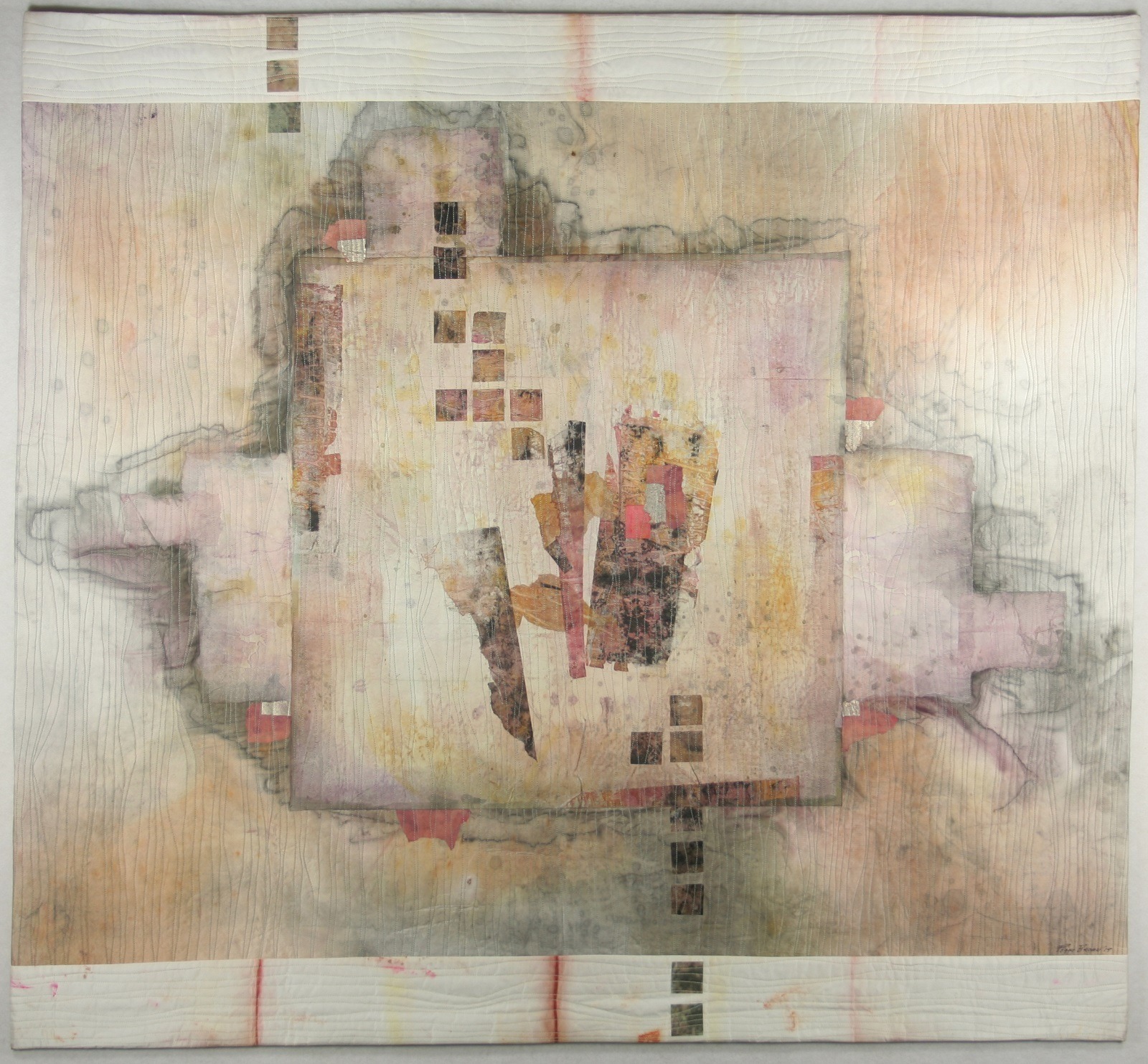
From paper to fiber art
TextileArtist.org: What initially attracted you to textiles as a medium? How was your imagination captured?
Peggy Brown: Many pieces of textile art warm and enliven our home. I have always been attracted to the tactile quality of the surfaces, the mellow jewel colors, the innovative designs. And those are just a few of the elements that excite me.
I consider my collection of weavings, baskets, thread paintings and quilts joyful and stimulating. After 30 plus years as a professional painter, I am pleased to say: I am now both a painter and a textile artist and consider both genres “fine art”.
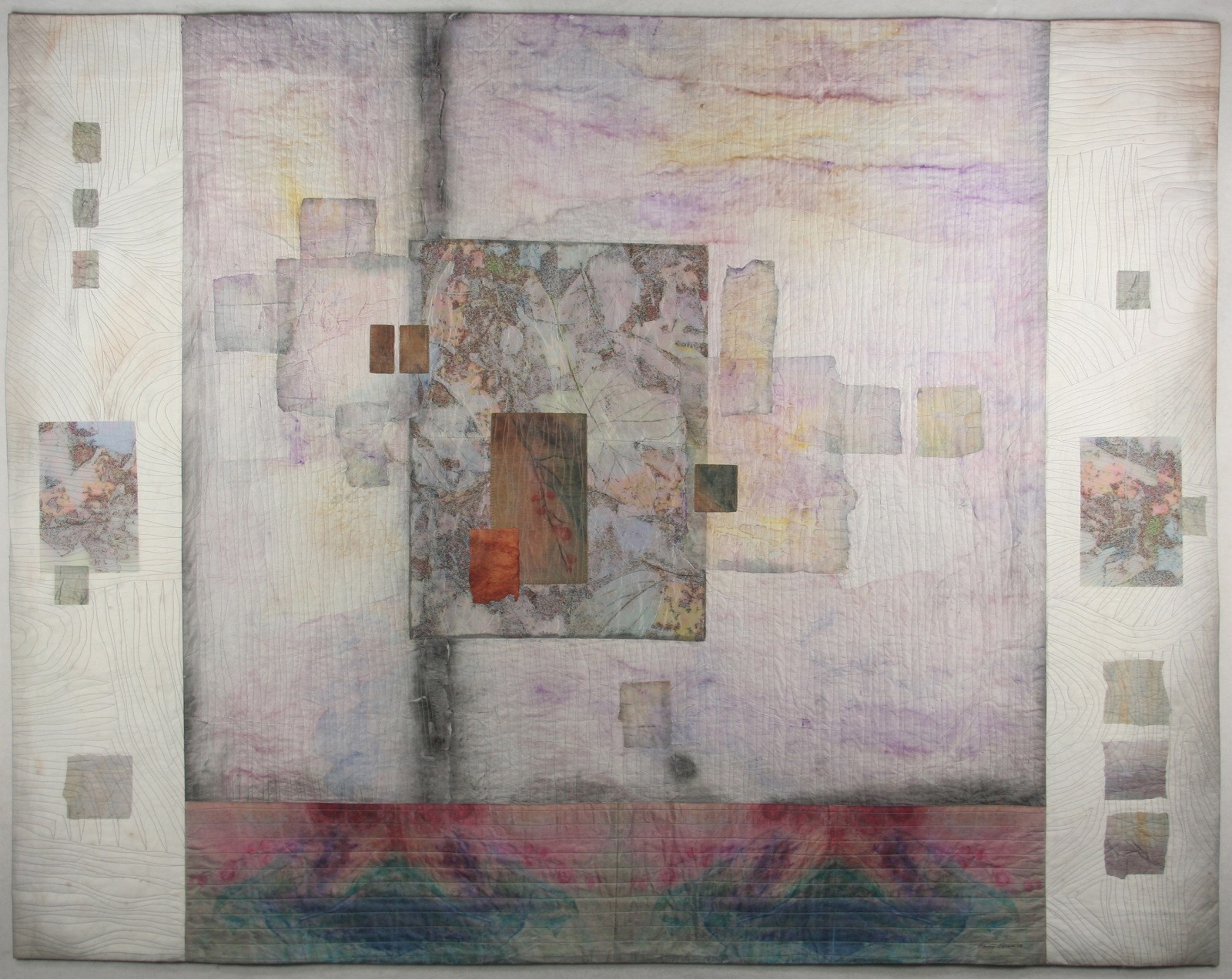
What or who were your early influences and how has your life/upbringing influenced your work?
It seems that every woman in my maternal family was quite adept at knitting, crocheting, tatting, embroidering or sewing. Some were proficient at all of them. Under mom’s tutelage, I learned to knit, embroider and sew but was never able to get my hands around crochet or tatting. In the 1950s my mother made several quilts from kits which she quilted by hand using a large wood frame. I still have the frame stored away – somewhere? It is now an antique. Occasionally, behind her back, I snuck in a few stitches which she always detected because mine were larger than hers.
I had plans to make my own quilts – someday. However, I found other outlets for my creative energy. In high school, I discovered journalism and worked on the school newspaper staff which led to a college degree from the School of Journalism, Marquette University in Milwaukee, Wisconsin.
After graduation, I worked as a writer/producer for Westinghouse Broadcasting company, married Jim Brown and enjoyed our family of three boys. If I found free time, I entertained myself and my imagination by drawing landscapes, flowers and other realistic imagery with graphite pencil; or putting my experience as a “kid embroiderer” to good use, I designed a few original wall hangings.
One day planning to try his hand at a watercolor painting, Jim came home with a library book on the subject, along with a set of transparent watercolor paints, and I decided to join in. My intended “hobby” soon became an obsession; then a profession. That was back in the early 1970s. It was not long before I began exhibiting and selling my watercolors and drawings through galleries and art festivals.
To create a professional resume and as part of my learning experience, I entered my paintings into many regional, national and international juried art exhibitions. They were accepted and garnered awards; and ultimately led to elected signature membership in professional artist organizations including the National Watercolor Society, the American Watercolor Society and Watercolor USA Honor Society.
Eventually, 30 years later, in 2002, encouraged by a friend who was an accomplished quilter; I finally got around to making my first quilt. I designed a Crazy Quilt featuring fabrics I had used to upholster furniture for a new vacation home in Florida. After creating a few more traditional quilts, I realized that the designs I created in my paintings would translate into fiber art and that I could use the same media and methods I used to paint on paper to create the surface design on fabric. I began creating Art Quilts.
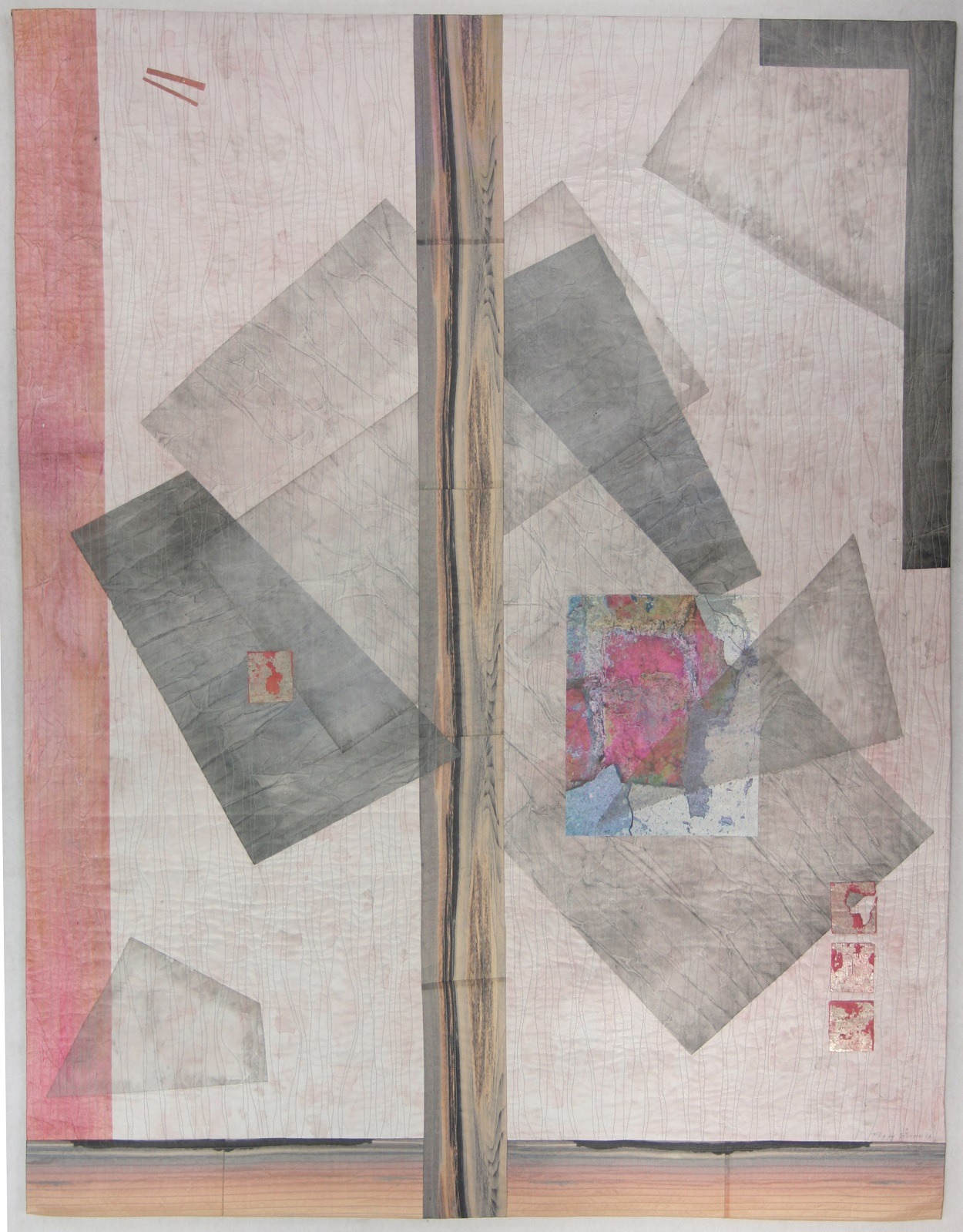
What was your route to becoming an artist?
My route to becoming an artist began with a love of textiles as a kid grew with my profession as a watercolorist, and now (in my very mature years) combines “Paintings on Paper” with “Paintings on Fabric”.
I cannot think of a better job than being an artist. I get to do what I love to do when I want to do it. I paint and quilt for my own joy, but true fulfillment comes when others unite with my vision and become a part of my marks on paper or fabric. I always leave room for the viewer to perceive the process and follow along as I work from tentative beginnings to the final touch.
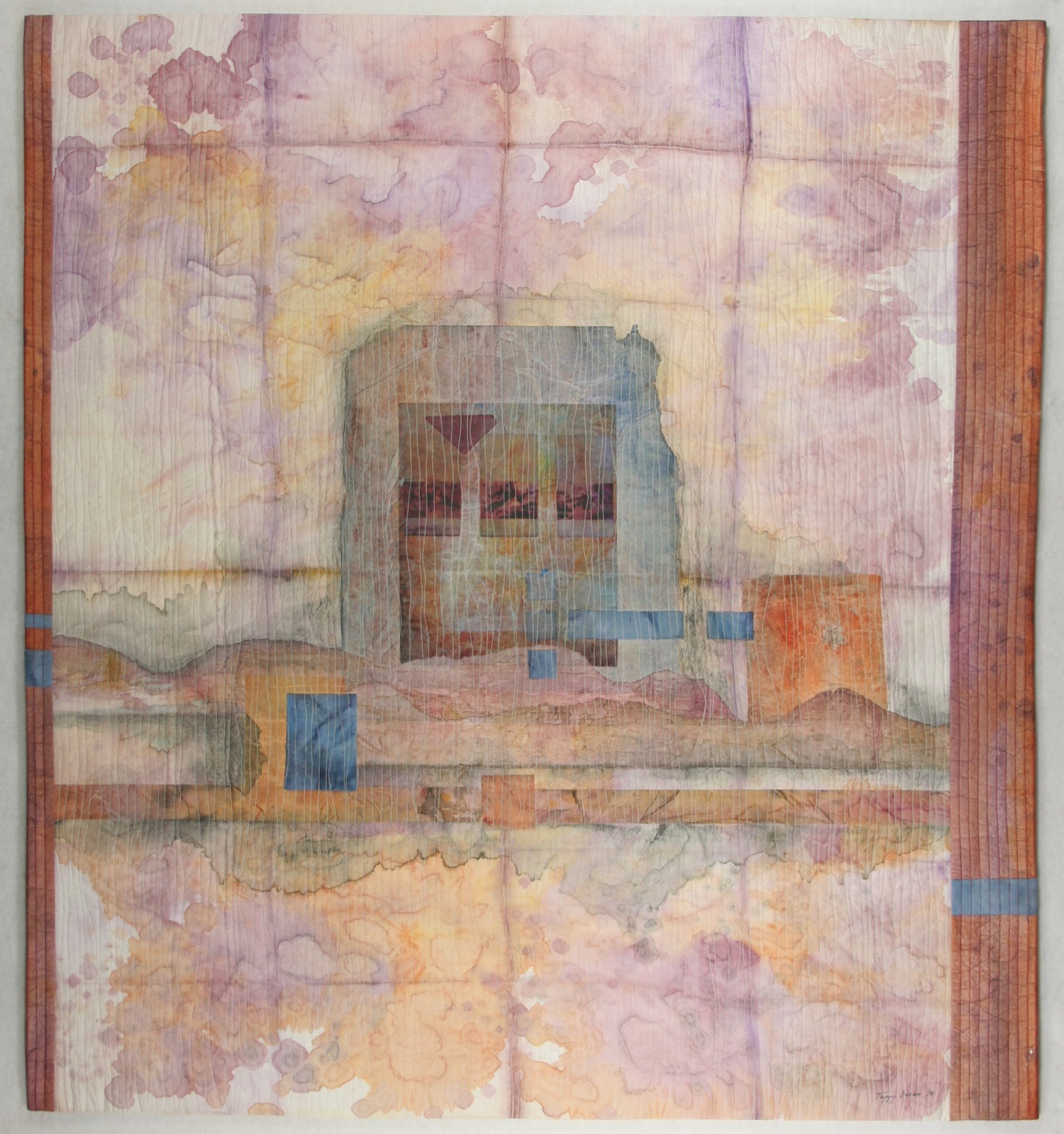
Painting, designing and quilting
Tell us about your process from conception to creation
I approach my work on fabric from the viewpoint of a watercolor artist. Whether working in a realistic or non-objective manner, I use the same media and method I have used for years. My main medium is transparent watercolor supplemented with graphite pencils, watercolor pencils and watercolor crayons. Methods include watercolor painting on fabric and paper. Favorite fabrics for painting include silk, cotton, interfacing, organza and archival paper. I added digital prints to my methods. After cropping a section from one of my paintings or personal photographs I transfer them to treated fabrics using Photoshop Elements, my computer and printer. Working digitally was a new and exciting experience for me – a method that has served me well.
PAINTING: Initially I paint large pieces of fabric or paper to use as substrates upon which I build my designs, plus many small pieces to use as collage pieces to compose my designs. To begin I lay the fabric or paper on a support board of lightweight insulation board that comes covered with thin plastic. This product is available at home improvement stores, can be cut to size, and is much lighter to lift. Next, I totally wet whatever I intend to paint with a sponge or spritz the surface with water from a spray bottle. Working on the wet fabric, I freely brush and splash on paint which I have diluted with water to a working consistency on my palette. I use professional tube watercolor; favorites are Windsor-Newton or Daniel Smith brands.
Colors are a personal choice and we all eventually find our own favorites. I use very few pigments and blend them on the palette and upon the fabric as I paint to create new colors. After a little more splashing with more pigment or clear water; and when I “like” what I see, I stop and lay the support board and its cargo aside to dry.
Learning when to stop is a matter of experimentation. It is best to use restraint. After drying, the fabric can always be gently re-wet and re-painted to intensify the color. I allow the painted fabric to dry at its own rate in its original position on the board. As the pigments dry, they mingle and assert their own personalities and textures.
Color can also be deepened by drawing with colored watercolor pencils or crayons while the fabric is still wet or after it is dry.
To strengthen painted paper for quilting, I give it a coat of acrylic matte medium, diluted half water/ half medium.
I do not wash painted fabrics but iron them to set the color. These painted pieces become my “stash” of substrates and collage pieces. The painting process continues later when I compose a design for a new quilt, and at times, even after the quilting is complete. I find a use for the tiniest scraps, so I never throw anything away and keep my collection of large and small painted fabrics in labeled boxes.
DESIGNING: Ideas spring from many sources: from my sketchbooks, design notebook and earlier work, but most arrive intuitively and spontaneously as I play upon fabric with both fabric and paper. First, I gather a collection of previously painted fabrics that look good together and talk to me that day. I add and subtract collage over a painted substrate looking for surprises. Nothing is permanent as I am often likely to change my mind several times and add new collage pieces or re-paint the old. I keep aware of but am not limited by, the rules of design. Early adventures are pinned or lightly taped and tucked away for a while.
When I visit a piece at a later time and with calmer eyes, I see errors and needed revisions more clearly, sometimes deciding to throw out what I have and begin over. When satisfied, I make a drawing on graph paper, listing sizes of the sections which gives me the measurements for the cotton flannel batting and the backing. Drawing on graph paper also preserves my original plan if I accidentally or deliberately move the collage components about. Sometimes I just cannot help playing with the design and, after moving things about, decide that my earlier plan was the best plan.
When all is settled, the pieces which need to be fused are ironed to fusing material, ready to be ironed to the substrate before quilting.
Designing is challenging, time-consuming and frustrating; but for me, the design always remains the most enjoyable and important part of making art.
QUILTING: Since I want the painted collaged textures and the designed imagery to be the most prominent elements in my work, I compliment my art quilts with very simple quilted designs using the straight stitch with neutral-colored threads on my inexpensive home sewing machine. If I decide that the finished, layered and quilted piece requires more color and refinement, I either add paint and pencil drawing to the dry quilt, adhere more collage, or carefully re-wet sections of the surface with water from a sponge, and re-paint. I rarely work on one quilt from start to finish but keep several, in various stages, in the works at one time. One process stimulates another.
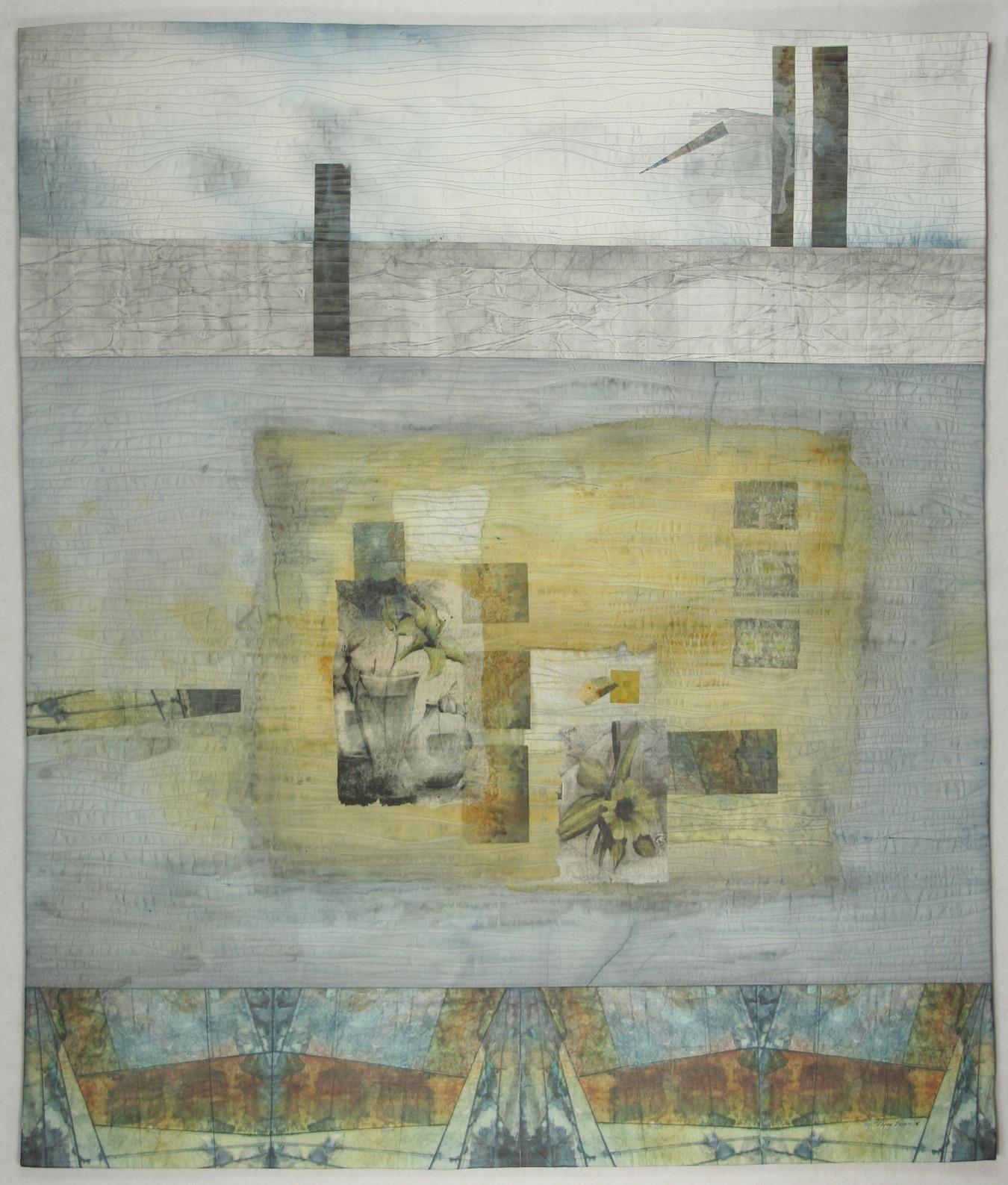
Tell us a bit about your chosen techniques and how you use them
Here I refer to one of my art quilts, “Lost in the Sun” which utilizes many different methods. The center of interest in the lower center yellow section is a collage of digital transfers featuring several of my pencil drawings of daffodils complemented by painted rectangles of silk and archival tissue paper. This section floats on painted blue silk.
The bottom section was composed by cropping a small portion from one of my paintings. I printed the cropped section two times on prepared sheets of treated silk, then printed it two more times in reverse. After alternating and joining all four 8.5 x 10.5 pieces into an 8 by 40-inch strip; I sewed it to the daffodil section. The two top bands were painted very lightly and added. The design needed more interest so I added collaged dark verticals to the top horizontals to direct the eye to the daffodils. All were layered over white flannel batting and a cotton backing. I quilted with silvery grey cotton thread allowing my subtle painted texture to take precedence. As always, I finished edges with facing turned to the back for a contemporary look.
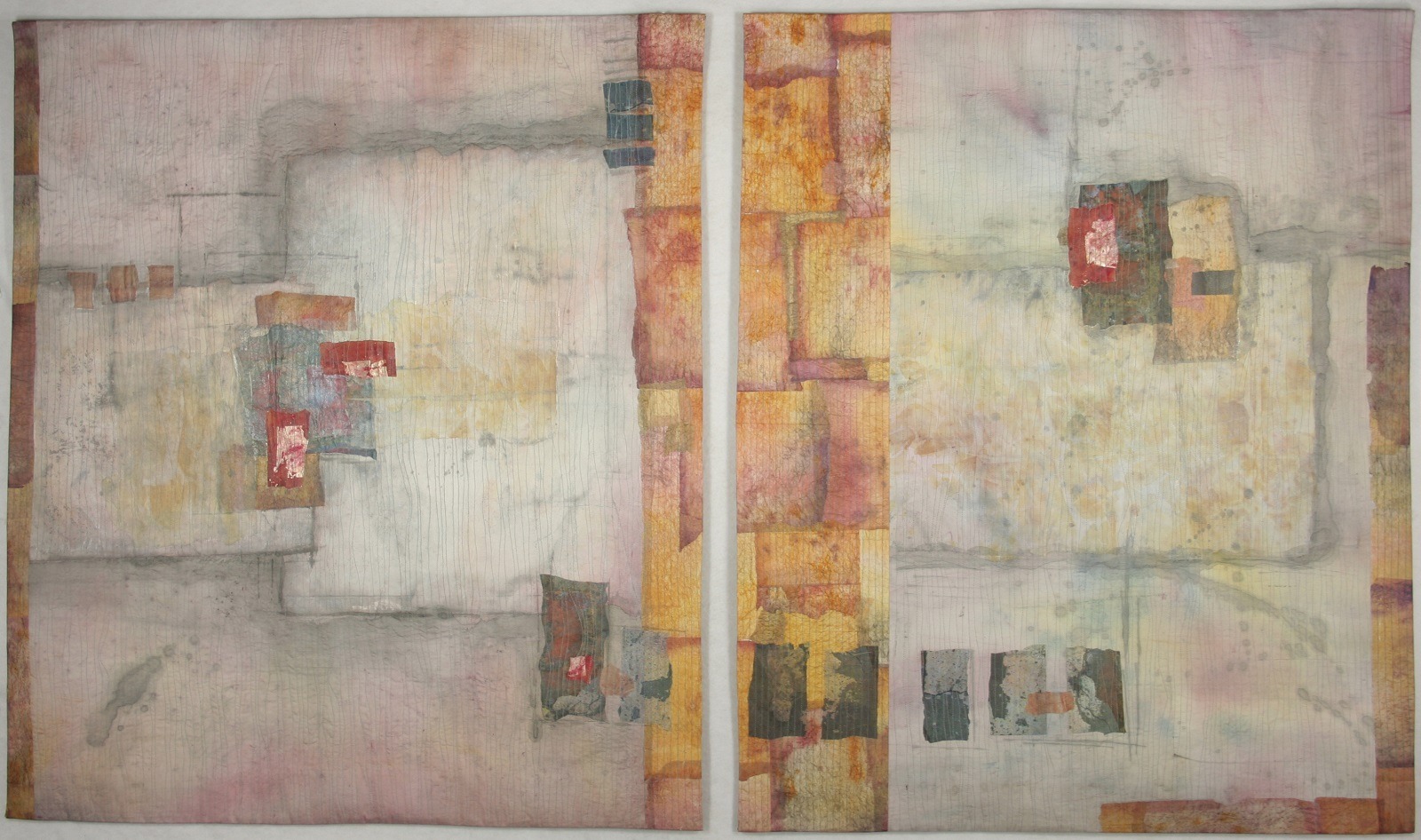
What currently inspires you?
When asked what inspires me, or what prompted a design, or to explain a special meaning in a piece, I am usually lost for an answer. My art is inspired by my life and each painting or quilt I create is one of my layers of life. Art is “what I do”. It is my job.
Whether painting or quilting, I am more conscious of color, design and following my own path than I am of trying to make a statement. I try to create beauty and believe that an artist need not explain, instead he should allow the viewer to seek and find his own meaning in the work. I try to paint and quilt continuations, not departures.
The same symbols, forms and ways of painting keep occurring with variations in my work. I work to music, mostly jazz. Music seems to affect my mood – which in turn affects my work.
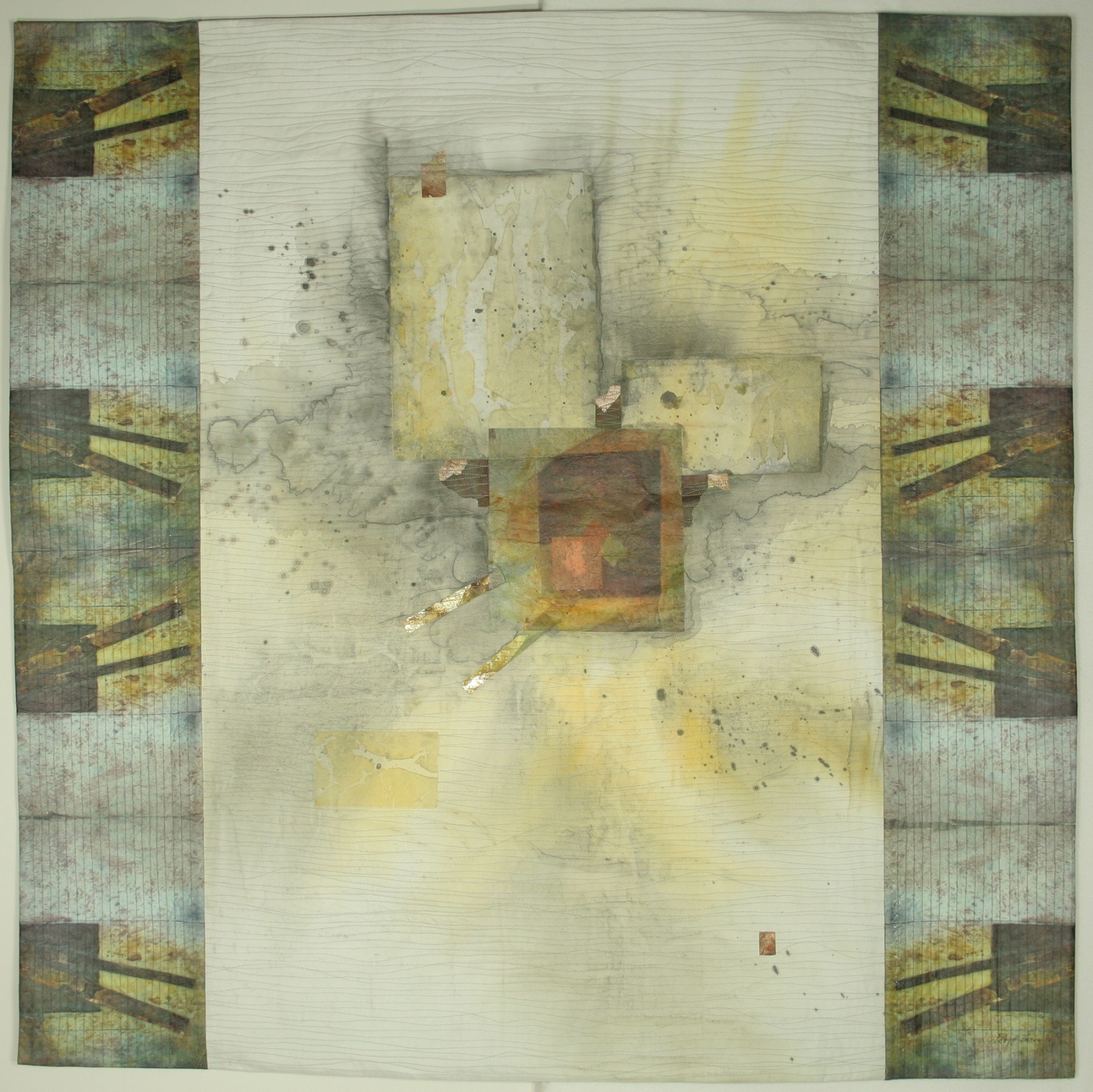
Breaking the boundaries
Tell us about a piece of your work that holds particularly fond memories and why?
“Soliloquy II” is special to me because it was my first piece accepted into what is considered one of the premier international art quilt juried exhibitions: Quilt National held bi-annually in Athens, Ohio. Being accepted in QN was a goal I set for myself when I first began creating art quilts.
I feel extremely fortunate to have had my work accepted and awarded in juried and invitational exhibitions and I encourage all artists to enter into competition as part of their growing process.
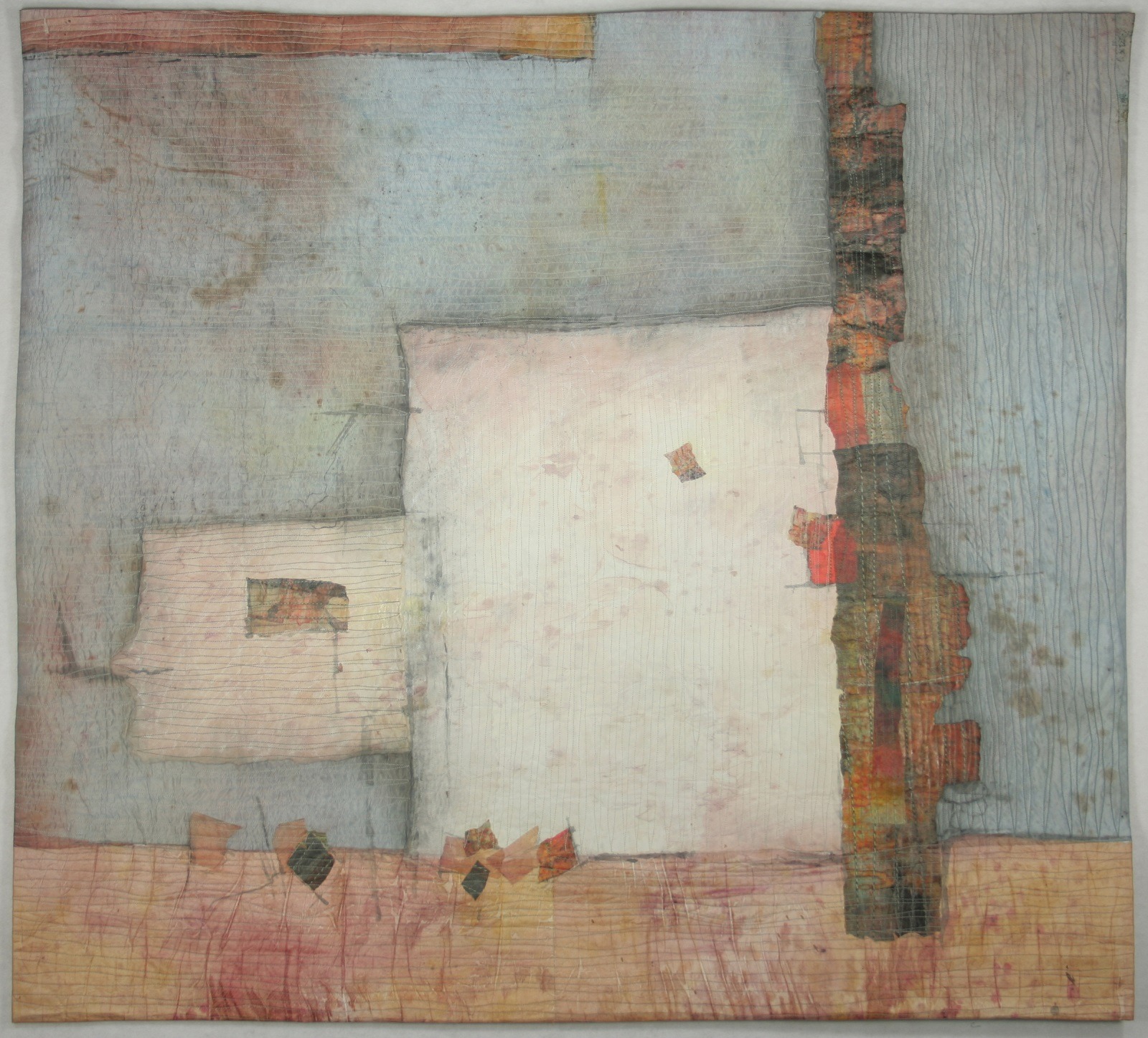
How has your work developed since you began and how do you see it evolving in the future?
My work has become more and more experimental. In the beginning, I felt bound by prescribed rules. I no longer feel bound by the rules of design and technique and strive to make each piece better and more exciting than the last. An impossible task! Humanly, I fail and digress. However, each error, each digression is a learning process and so I grow after all. I hope to continue to improve.
As for the future, I have plans to revive my early fondness for embroidery and more aggressively combine embroidery with quilting. Ideas are in my notebook.
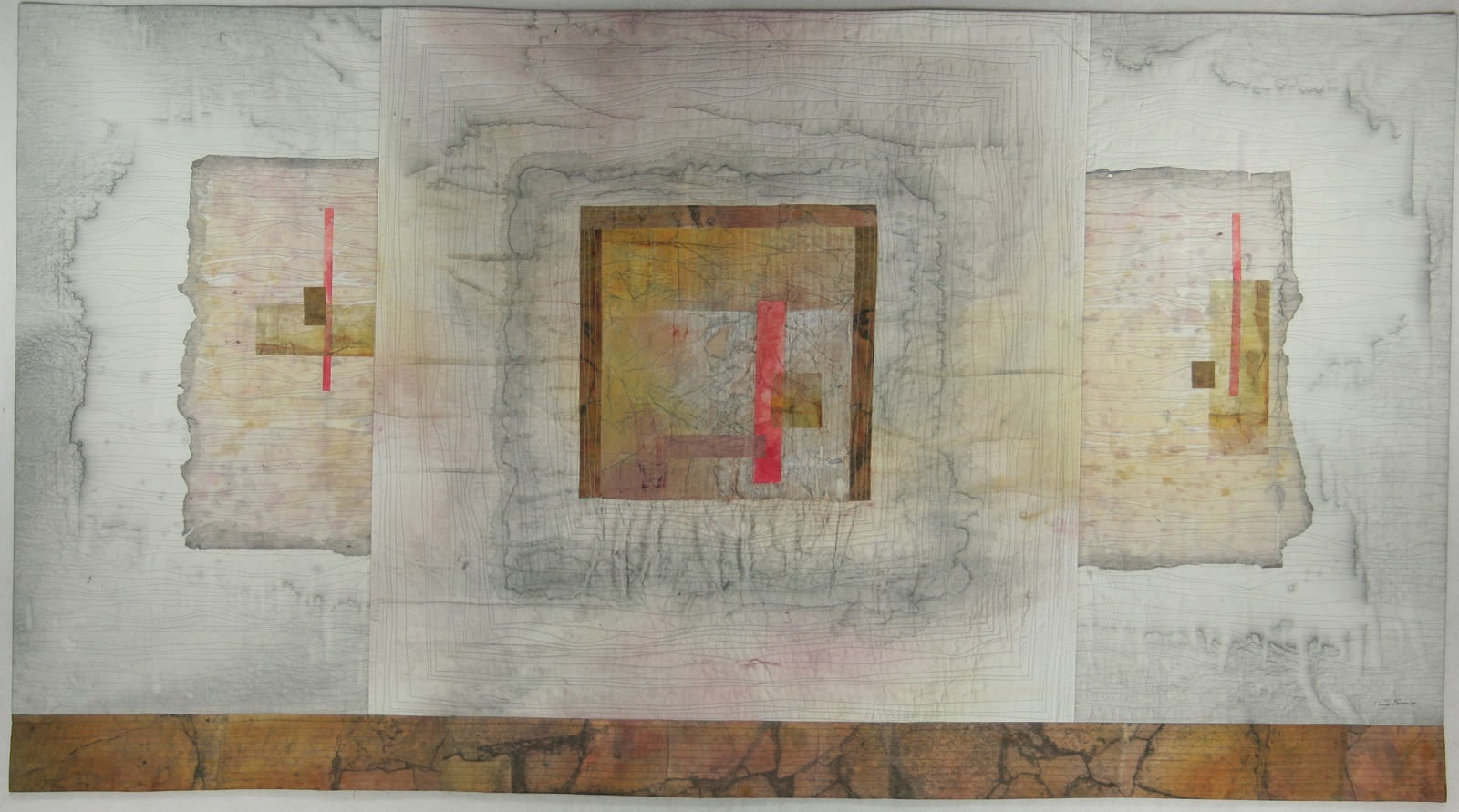
What advice would you give to an aspiring textile artist?
Be true to yourself, follow your own sensibilities, listen to your heart. You can be influenced by other artists, but do not allow their style to be all-consuming. Above all, make art – make lots of art – just do it!
I keep this short poem by Victor Hugo, typed on a yellowed piece of paper, besides my worktable.
Be like the bird, who
Pausing in his flight
On limb too slight
Feels it give way beneath him
Yet sings
Knowing he has wings.
For more information visit peggybrownart.com
Peggy advises readers to make art – lots of art! Is there anything that stops you from doing this? Share with us in the comments below
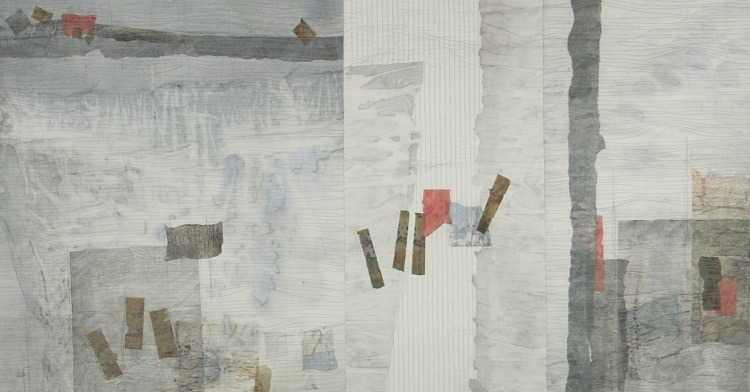


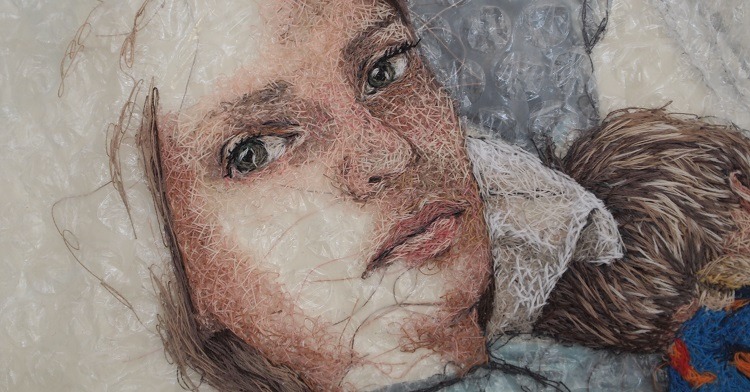
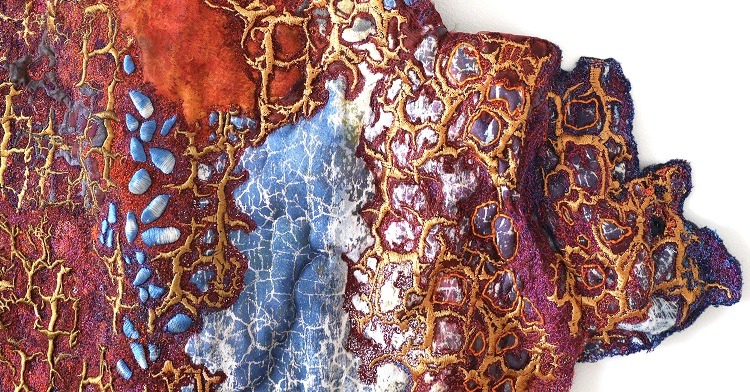
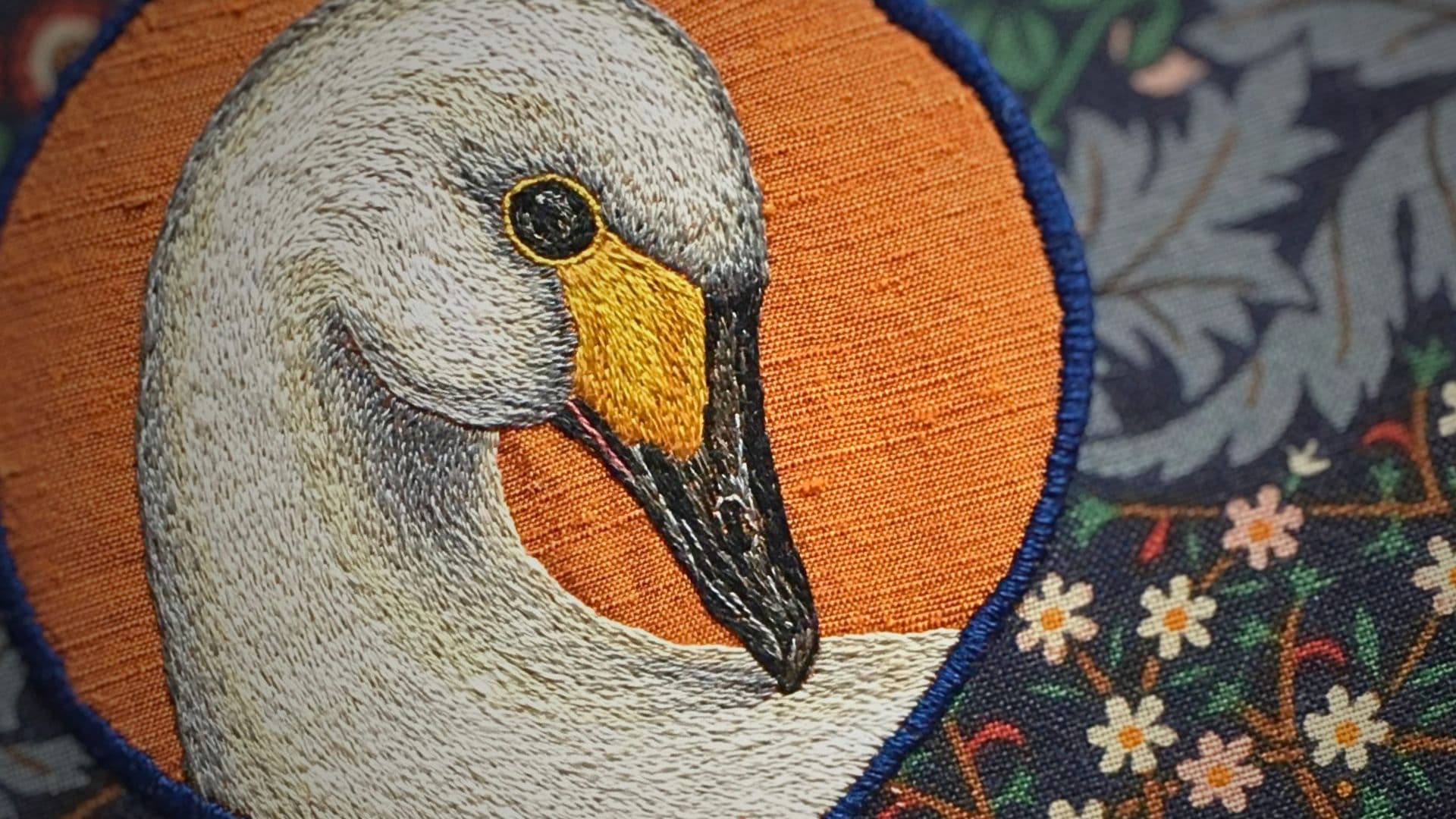
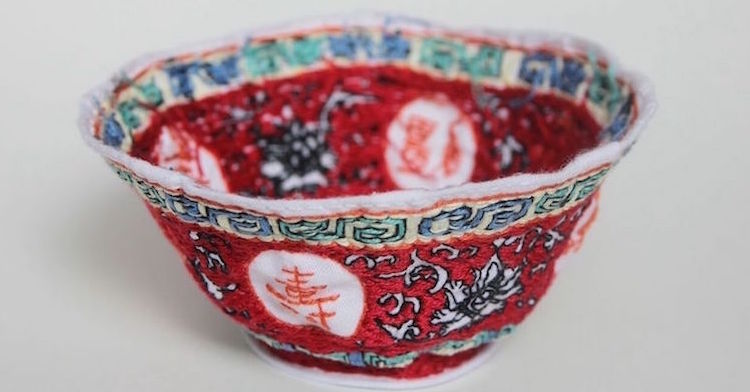
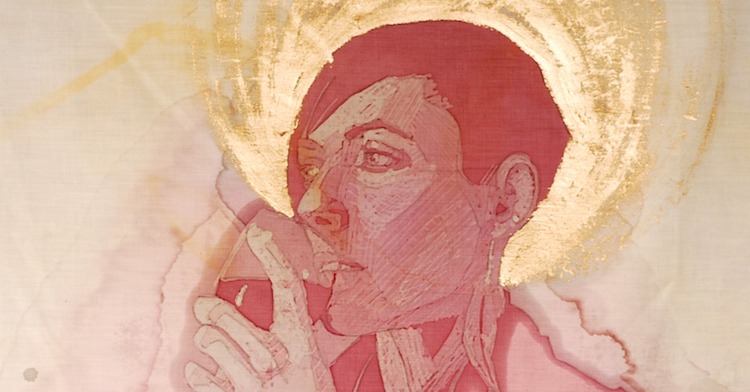
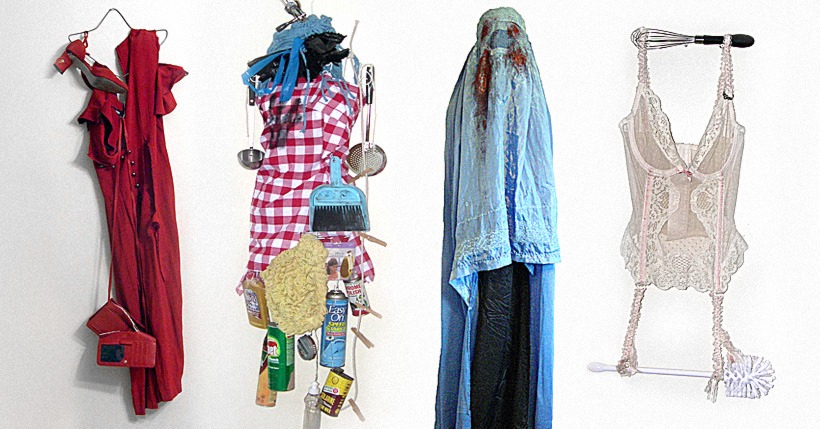
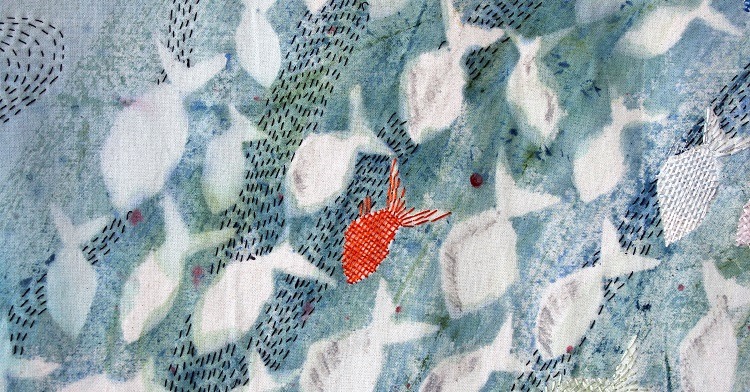
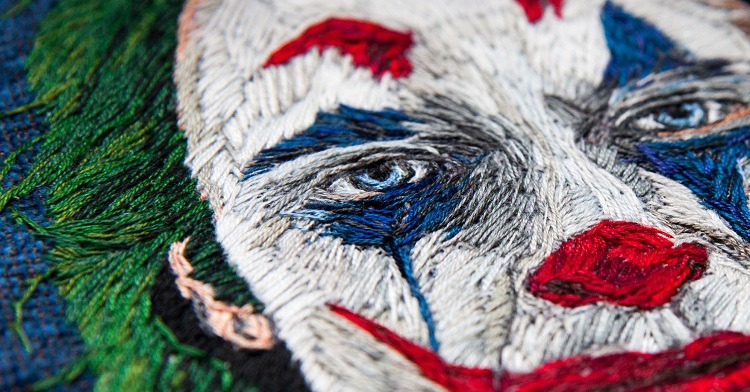
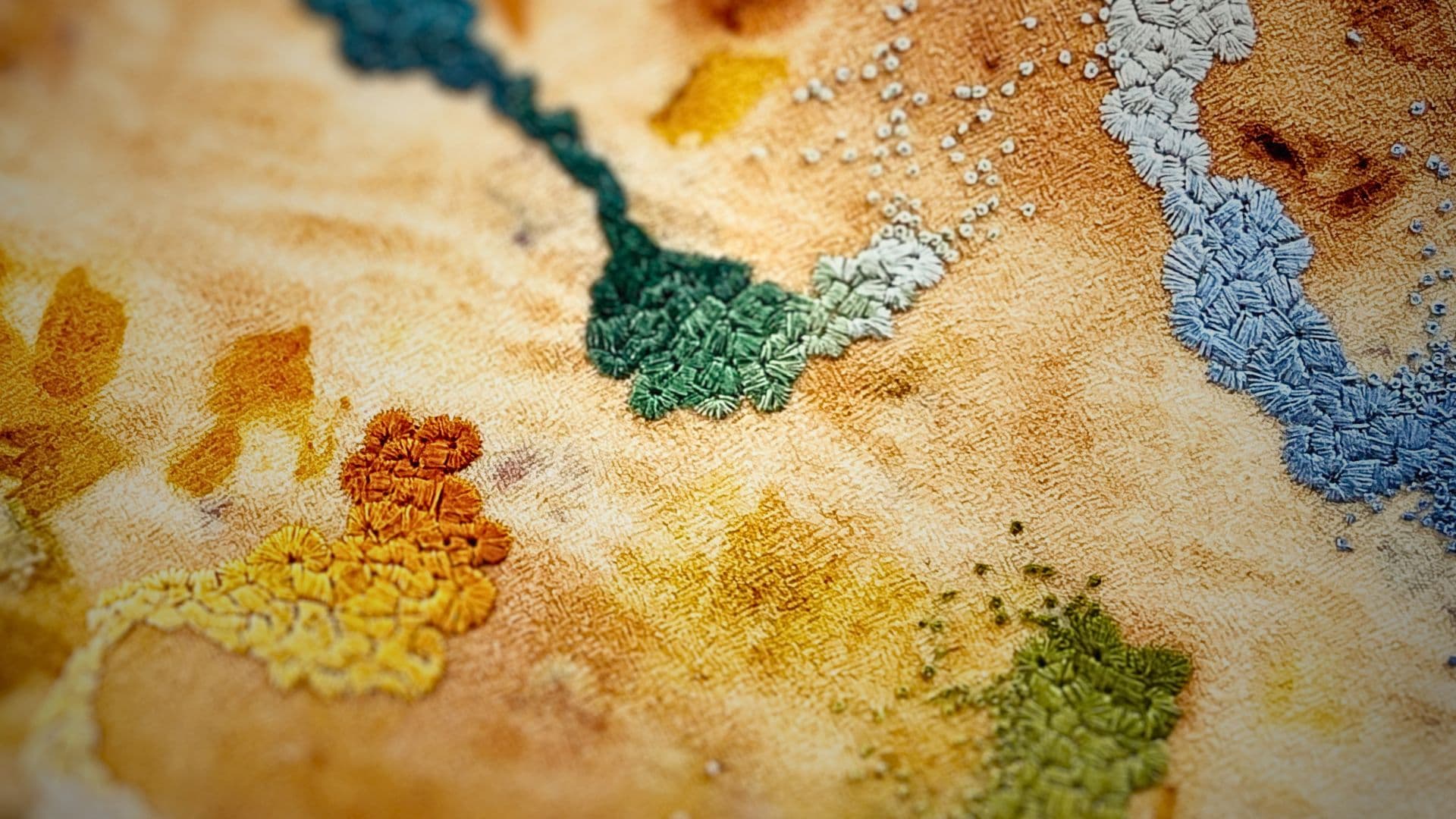
17 comments
debbie smith
Good morning! I’ve just seen your work through Joe & Sam and I just love what you are doing, By chance, are you on Instagram? Thanks! Debbie
Christine Kolar
Ms. Brown,
On a recent road trip, stopping on a sunny afternoon in Nashville, Ind. I came across your work in their Art Gallery.
I was reminded of the first time I saw your pieces.
The little bird watercolor that my husband and I bought at the Ann Arbor Art Fair in 1970-71 is a treasured piece in our home. to this day.
Thank you.
Peggy Brown
Hi Christine. I just discovered your comment in reply to the above article. Found it today ,March 14, 2022, after The textile Art site published the article about my work as a repeat. I hope you find and read this. Don’t know how to write to you directly. What fun to hear from you. People loved those little birds back in my first two years of being in the Ann Arbor Festival. So glad to know one is still being loved. Fondly, Peggy
Peggy Brown
Just happened to go back and see if anyone new has written to me on the Textile Artist.org site. It is been a long time so hope you get this Angie; wanted to answer a few of your questions. I have a mailing list but no longer teach. Getting up in years and my bones get tired. Also I am not one for the social media – spend all my time making art, not reading about making art. Sorry.
I especially want to thank you for your compliments and do hope that “bright light” is still turned on and your heart is racing. Do get back to me. Thanks, Peggy
Angie Collett
Your work has me completely intrigued. Like, I sit here enlarging pieces on my computer screen, studying. I am a watercolor artist who is obsessed with textiles. While I have painted watercolor on unstretched canvas primed with a thin layer of gesso and then added fabrics and quilting, it has not occurred to me to use this medium on any other fabric. Seeing your work is like someone turned on a really bright light in my creative brain that makes my heart race! My mind is racing with possibilities in a whole new way! If you ever decide to start a mailing list, do youtube videos, teach workshops, etc… I’d sure love to be on that list! Your work is just stunning. It evokes such calm.
criss
Me encanta tu trabajo… quisiera preguntar que tipo de papel usas sobre la seda… muchas gracias
Lou
This is so inpirational, i love the subtle colour shifts, feeling invigorated! You mention cotton flannel to quilt with. I live in the uk, flannel cloth is it a type of batting or fabric? i see you wouldnt want great depth to detract from the surface marks. Also the ground fabric is this a normal weight cotton? Thank you for sharing your work.
Peggy Brown
Thank you for your compliments. I use white cotton flannel as my batting between the top layer (the art) and a backing of normal weight black Kona Cotton. ( Cotton flannel is used a lot for children’s sleep ware etc). And you are right, flannel doesn’t add depth like traditional batting so my surface design textures are what you notice. At times I even paint flannel and use it in my quilt top or as the substrate for my collage. It looks and feels a lot like felt when painted. Peggy
Lou
Peggy, thank you very much for responding, flannel pyjamas – I know it now! That’s so interesting, I’ll be buying some to try out. thanks again
Nicola Basham
Remarkable work. And a very clear and inspirational description of the process and techniques used.
One question ……what measurement are we talking about….inches or centimetres….
Peggy Brown
Inches! Thanks so much. l love sharing with others and appreciate your comments and compliments. Peggy
Kurt Brown
Inches
Judith thorne
Do the papers make your quilts fragile and where do you buy or how do you treat silk for printing? I love your work.
Peggy Brown
I coat my papers with acrylic matte medium, diluted half and half with water, and applied with a brush after I paint it and it has dried. At times I paper again after quilting. I purchase my silk for painting by the yard thru Dharma Trading Co. I gave up treating my own silk for printing and now purchase commercial silk on paper which is treated especially for printing with a computer and printer. I found good prices thru Soft Expressions. Search both companies, they have neat web sites. Thanks for loving my work – I love making it. Peggy
Peggy Brown
Made an error to my reply above. I meant to say in the second sentence: “At times l paint the paper again after quilting.” Sorry, Peggy
Jacqueline treloar
As a textile artist I am wondering about conservation of the silk and watercolour aspects of these lovely pieces
Peggy Brown
Silk is a natural product and should be as permanent as any textile. Watercolor paints are as permanent, and even maybe more permanent than oil and especially dyes. Examples are the old Watercolors of Turner, even the cave paintings. I wrote to Windsor Newton and the President wrote back saying that watercolor on fabric should be as permanent as any media when used properly.. Of course, no media should be hung in direct sunlight and watercolor on fabric is for hangings only – not clothing which needs washing. Thanks for asking, Peggy